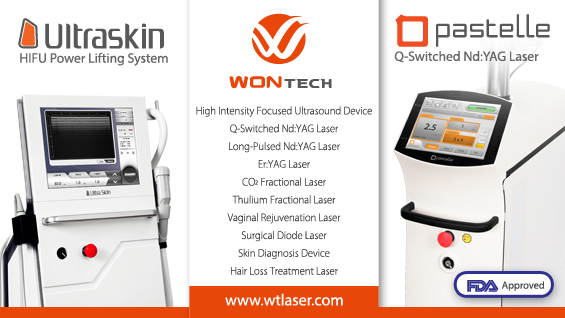
Oh Wook, Director of Samsung Feel Clinic
The name Lavieen comes from the French phase “la vie en rose” which translates into a life where everything appears rosy and cheerful. Most women wish to have flawless and smooth skin. And those women who can have this wish come true may find a new source of confidence and happiness in their life. As its name suggests, Lavieen laser was developed to help women lead a more confident and happier life with clear, beautiful skin.
There are many obstacles to flawless skin such as melasma, blemishes, and other pigmented lesions as well as overall skin tone, pores, and fine wrinkles, etc. I boldly state that Lavieen may be the very solution to all these problems. The manufacturer nicknamed Lavieen laser a “BB laser,” after the blemish balm cream which is a tinted moisturizer popular among young women for giving the skin instantly smoother and clearer appearance. This nickname is quite effective as many patients already visit me looking to receive BB laser treatment.

Image 1. Lasser Tissue Absorption Spectrum.
Lavieen is a 1927nm thulium doped fiber laser with a unique chromophore of water and not melanin. This may seem like a limitation of a pigment laser as one may think that it should target melanin. However, the chromophore of water has advantages when looking at laser’s mechanism of action. A 1927nm thulium laser has water absorption higher than the 1550nm Er:glass laser and drastically lower than the 10600nm CO2 laser (Image 1). In other words, the chromophore absorption of thulium laser lies between those of the Er:glass laser and CO2 laser. This allows Lavieen to complement the limitations of both lasers by adjusting parameters and maximize their clinical benefits.
Taking a closer look, the thulium laser’s water absorption is about 10 times that of Er:Glass laser and about 1/10 of that of CO2 laser. The Er:Glass and CO2 lasers have drastically different histological effects on the skin due to their different water absorption.
[Advertisement] Ultra Skin/Pastelle – Manufacturer: WONTECH(www.wtlaser.com)
The CO2 laser ablates the epidermis first due to its very high water absorption rate. This gives the CO2 laser many clinical benefits. However, as it damages the stratum corneum, the downtime is long and various side effects can occur. Conversely, the Er:Glass laser has much lower water absorption, which allows it to penetrate the epidermis without damage and act on the dermis with larger water content. Histolotical examinations after laser irradiation show protein degradation in the shape of heat columns in the dermis. This can be used in clinical practice for removing acne scars and improving elasticity, etc. As mentioned above, however, the Er:Glass laser works on the dermis and fails to affect the basal layer containing most of the melanocytes. For these reasons, the Er:Glass laser has poor efficacy in pigmented lesions or whitening treatments.
Then, how does the 1927nm thulium laser differ from the above two lasers? The thulium laser has properties that come in the middle between CO2 and Er:Glass lasers. It has much lower absorption in water, its chromophore, than the CO2 laser and leaves the dry stratum corneum intact. On the other hand, it has much higher water absorption rate than the Er:Glass laser and reaches the dermoepidermal junction or upper dermis. That is, it does not penetrate deeply into the dermis like the Er:Glass laser and the laser energy is focused in the basal layer. Targeting the basal layer rich in melanocytes gives Lavieen a special advantage in various pigmented lesions. Another advantage is that it has short downtime by preserving the stratum corneum and causes less discomfort and sequelae compared to traditional laser therapies.
-To be continued-




















